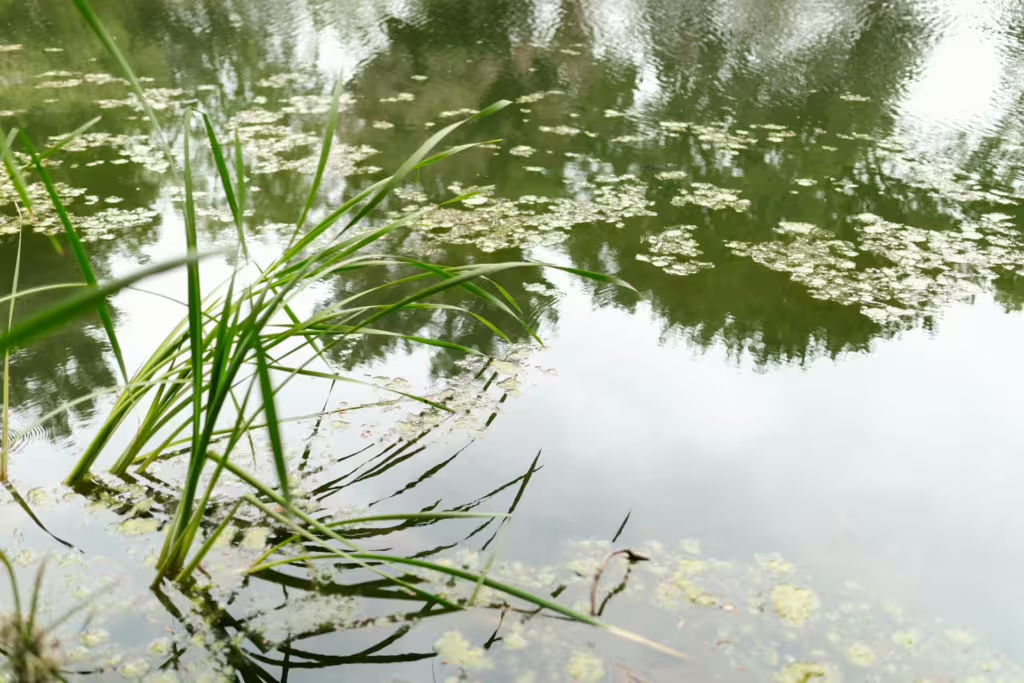When most people see a bit of algae creeping up the walls of their fish tank, they think “wow, I better clean that soon,” unaware of the fact that, the longer they let that algae grow, the more dangerous that fish tank becomes for its other aquatic inhabitants. At this scale, that of the home aquarium, algae might seem like little more than a green, slimy nuisance; in the grand scheme of things, however, this seemingly-innocuous water weed is becoming a serious problem for the global environment at large.
Believe it or not, algal blooms have been growing environmental concern for the better part of several years now. These tiny green plants affects freshwater and marine ecosystems all over the world and though they generally grow pretty rapidly, in general, their increased proliferation can be directly tied to human activity. These blooms can and do have devastating consequences for the surrounding aquatic life, but they can also be a problem for human beings. Not only does algae have an affect on human health but also on economies that rely on clean water.
We should be clear, we aren’t discussing the helpful algae that occurs naturally in aquatic environments. This naturally occurring algae is often crucial in maintaining the homeostasis of aquatic ecosystems, serving as food for animals and helping improve water quality. Nevertheless, excessive growth of algae can lead to severe disruptions within an ecosystem.
In many cases, algal blooms are often a symptom of nutrient pollution, something that is primarily caused by agricultural runoff, wastewater discharge, and harmful, industrial activities. The resulting overgrowth of algae can produce harmful toxins, but the more severe consequence is that the overabundance of algae can seriously deplete oxygen levels in the surrounding water. This process, known as anoxia, creates dead zones within the water where few other organisms can survive. Moreover, this problem is exacerbated by climate change, s global problem that has been altering temperature patterns all over the world for the past half-a-century.
In this article, we will explore the causes of algal blooms in greater detail. At the same time, we will go into the various dangers these blooms represent, as well as the environmental impact that excess algae can have in different aquatic ecosystems. Finally, we will discuss some potential solutions to this problem, highlighting what individuals and communities can do to mitigate this environmental hazard.

What Are Algal Blooms?
When we talk about algal blooms, we are referring specifically to the rapid and excessive growth of algae in salt or freshwater aquatic environments. This increased growth and rate is referred to as a “bloom” and it most often caused by an excess of nutrients in the water. The usual suspects in this regard are nitrogen and phosphorus. two nutrients that act as fertilizers that promote rapid algae growth. The thing is, while blooms are harmless and naturally occurring, others can become hazardous, especially as these are the ones that tend to directly disrupt ecosystems and produce toxins.
There are two main types of algal blooms: harmful algal blooms (HABs) and non-toxic blooms. The former of these are particularly dangerous because the mature algae releases toxins that can be deadly to marine life, pets, and even human beings. The most common culprit among the HAB blooms is Cyanobacteria, also known as blue-green algae. These microorganisms can produce neurotoxins and hepatotoxins that affect the nervous system and liver of animals; so they’re really no fun to come into contact with when you’re down at the lake or the beach for a fun day. Non-toxic blooms, though not directly harmful, aren’t all sunshine and rainbows. These blooms can still become so numerous that they result in oxygen depletion in water bodies, which suffocates fish and other aquatic organisms.
Algal blooms aren’t just a saltwater or freshwater problem, either, as they can occur in both freshwater and saltwater environments. In lakes, rivers, and reservoirs, they often manifest as thick green or red scums on the surface of the water. In coastal waters, they can create large red or brown patches, commonly referred to as “red or brown tides.” Any abundance of these colors on the water’s surface is a sure indication that an algal bloom may be underway. And though the effects of these blooms vary, they are still consistently and rightly attributed to ecosystem disturbances, economic losses, and health risks.
As we said earlier, while algal blooms primarily result from nutrient pollution, there are several other factors that can greatly contribute to their formation. The most significant of these causes include:
Nutrient Pollution
The excessive presence of nitrogen and phosphorus in water bodies is the leading cause of algal blooms. Those, normally-helpful nutrients enter aquatic ecosystems through agricultural runoff, sewage discharge, industrial waste, and stormwater drainage. At the same time, we can’t forget the fertilizer compounds that are frequently used in modern, industrial farming. Those same elements, when washed into nearby waterways, contribute significantly to nutrient overload. Nor can we overlook the runoff from urban areas; compounds that come from chemical fertilizers in lawns, gardens, and golf courses. Livestock operations also play a role in this ever-increasing problem, simply because animal waste, rich in nitrogen and phosphorus, often finds its way into lakes, rivers, or coastal waters.
Climate Change
Ah, our old enemy climate change. Generally considered to be borne directly of human activity, climate change is one of the chief ecological issues facing our planet today. One of the problems that it creates has to do with an annual rise on global temperatures all over the world; something most of us feel to be true every time we step outside, Those same rising global temperatures play a significant role in increasing the frequency and intensity of algal blooms.
It’s elementary of one thinks about out, really. Warmer waters create ideal conditions for algae to thrive, leading to longer and more persistent bloom periods. Yet this isn’t the only way that climate change can help algae. Climate change influences precipitation patterns, which can result in heavier rainfall and more nutrient runoff into waterways, as well as affecting water stratification. The result of this is a reduced rate of water circulation, which traps those same “helpful” nutrients in the surface layers of the water, at the very sport where algae grows best.
Stagnant Water Conditions
We touched on it a bit in the section about nutrient poisoning, but water movement plays a crucial role in controlling the growth of certain algae. Stagnant or slow-moving waters, such as those in ponds, reservoirs, and certain coastal areas, provide optimal conditions for algal proliferation and the construction of dams has made more and more of these still, cordoned-off waterways. Irrigation is similarly problematic, as like dams, it too can also alter water flow, creating stagnant conditions that promote bigger blooms.
Increased Carbon Dioxide Levels
Higher levels of carbon dioxide (CO₂) in the atmosphere not only worsen climate change, they also enhance algal growth. Algae, like all plants, utilize CO₂ for photosynthesis, so an increased concentrations of the gas can accelerate their reproduction in alarming ways. At the same time, when atmospheric CO₂ dissolves into water, it alters the aquatic carbon balance, providing an abundant carbon source for a number of opportunistic algal species.
There is also the problem of ocean acidification, another ecological disaster that is driven by increased CO₂ absorption. This problem impact marine ecosystems by affecting many marine species, but it also influences algal composition in a favorable way. For instance, harmful algal species, such as cyanobacteria, respond particularly well to elevated CO₂ levels, leading to more frequent and toxic blooms.
Habitat Destruction
Deforestation and wetland destruction reduces the ability of natural ecosystems to filter excess nutrients from water. Wetlands are particularly pertinent in this regard, as they tend to act as natural buffers, trapping and absorbing pollutants before they the lakes, rivers, and other bodies of water. As these places are destroyed by the proliferation of human infrastructure, nutrient loads increase, leading to the similar proliferation of harmful algae species.

The Dangers of Algal Blooms
Why are algal blooms so dangerous, you may ask? Well, for one, some are highly toxic, which should kind of be a no-brainer. Nevertheless, even the most benign algae poses numerous threats to both aquatic ecosystems and human populations.
Human Health Risks
Exposure to toxic algal blooms can result in skin irritation, respiratory problems, and gastrointestinal issues in human beings or pets. Additionally, consuming seafood contaminated with algal toxins can lead to serious illnesses such as paralytic shellfish poisoning (PSP), amnesic shellfish poisoning (ASP), and neurotoxic shellfish poisoning (NSP). In extreme cases, any of these conditions can prove to be fatal.
Economic Consequences
Algal blooms have devastating economic repercussions, particularly for industries that rely on clean water. Fisheries, tourism, and recreation all need clean water in order to function and declining water quality can deter tourists or make entire fisheries completely unharvestable
Drinking Water Contamination
When toxic algal blooms occur in freshwater sources, humans and animals can no longer safely drink that water. Also, sorry to be the bearers of bad news, but water treatment plants may not be the direct solution to this. These plants sometimes struggle to remove all toxins, potentially exposing communities to harmful chemicals that can cause disease, sickness, and even death in some rare cases.
Damage to Ecosystem Balance
Algal blooms disrupt the natural balance of an ecosystem in several ways: first, by outcompeting beneficial aquatic plants and second, by altering food webs. When an algae species dominates an area, it can push out other organisms, leading to a loss of biodiversity and long-term changes in ecosystem dynamics.
Solutions and Prevention Strategies
The algae is coming, whether we want it to or not. The question is, can we do anything to stop or even slow it at this point? The answer is, kind of? Truth be told, addressing algal blooms requires a combination of policy changes, improved agricultural practices, and community efforts. Some key strategies include:

Reducing Nutrient Runoff
Implementing best management practices (BMPs) in agriculture, such as precision fertilization, cover cropping, and buffer zones, are all effective ways of minimizing nutrient pollution in the long term. Similarly, proper wastewater treatment should become one of these best practices for humans the world over, as should reducing industrial discharge into any and all bodies of water.
Restoring Natural Ecosystems
Wetland restoration and afforestation projects are helpful to the environment in a number of ways. In terms of controlling algae, these efforts can help filter pollutants and reduce the amount of nutrients entering water bodies.
Monitoring and Early Detection
Regular monitoring of water quality can be a real boon in detecting a bloom. Keeping a closer eye on things can help us detect early signs of algal blooms, which would then allow for quicker response measures by scientists and experts.
Public Awareness and Education
As we do on True Investigator, one of the best ways to combat algal blooms is to educate people and communities about what they actually are. At the same time, folks need to learn about the direct causes and consequences of these blooms so that they take action. Reducing fertilizer use, properly disposing of waste, and advocating for stronger environmental policies are all great ways that individuals can help.
Climate Action
Humanity needs to address climate change or we are going to be headed for extinction sooner than we think. This statement may seem harsh, but most true statements are. We know that we need to vastly reduce greenhouse gas emissions and adopt more sustainable practices in order to mitigate climate change, and doing so will also mitigate the conditions that promote algal blooms. This is yet another reason why global efforts to curb rising temperatures are so crucial for humanity and the world at large.
True Investigator Says…
As you can see, algal blooms are far from the mere nuisance the vast majority of us once believed them to be. In many ways, these tiny, once-innocuous organisms have literally bloomed into a serious environmental issue with far-reaching consequences all across the globe. Not only can overgrown algae harm aquatic life and human health in a variety of ways, they can also disrupting economies and ecosystems as a whole, altering life on a scale, hitherto unseen since the days before the dinosaurs. Driven by nutrient pollution and climate change, the only way to combat this problem is to institute proactive measures to help mitigate their impact.
By adopting sustainable agricultural practices, restoring natural ecosystems, improving water treatment processes, and increasing public awareness of the problem at large, we can perhaps find our way towards a clean, less green future. The only way to fix this problem is to take ownership of the fact that we are making it worse with each passing day and to work towards a better tomorrow together.
Discover more from TrueInvestigator
Subscribe to get the latest posts sent to your email.


